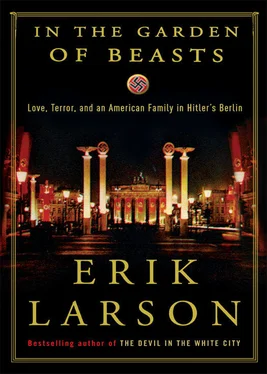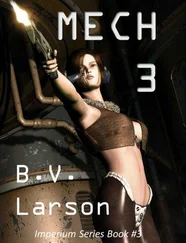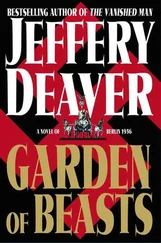Again there were moments of dark comedy. One target, Gottfried Reinhold Treviranus, a minister under General Schleicher when he was chancellor, was in the middle of a tennis game at the Wannsee Tennis Club when he spotted four SS men outside. Wisely trusting his instincts, he excused himself and ran. He scaled a wall, caught a taxi, and eventually made his way to England.
In central Berlin, the SA man moonlighting as the driver of the Hotel Adlon’s catering van found himself stopped by the SS at a checkpoint near the Brandenburg Gate, not far from the hotel. The hapless driver had made the unfortunate decision to wear his brown Storm Trooper shirt under his suit jacket.
The SS officer asked where he was going.
“To the king of Siam,” the driver said, and smiled.
The SS man took this as a wisecrack. Enraged by the driver’s impudence, he and his associates dragged the Storm Trooper out of the van and forced him to open the rear doors. The cargo space was filled with trays of food.
Still suspicious, the SS officer accused the driver of bringing the food to one of Röhm’s orgies.
The driver, no longer smiling, said, “No, it’s for the king of Siam.”
The SS still believed the driver was merely being insolent. Two SS men climbed onto the van and ordered the driver to continue to the palace where the party supposedly was being held. To their chagrin, they learned that a banquet for the king of Siam was indeed planned and that Göring was one of the expected guests.
And then there was poor Willi Schmid—Wilhelm Eduard Schmid, respected music critic for a Munich newspaper—who was playing his cello at home with his wife and three children nearby when the SS came to the door, hauled him away, and shot him.
The SS had erred. Their intended target was a different Schmid. Or rather, a Schmitt.
Hitler dispatched Rudolf Hess to make a personal apology to the dead critic’s wife.
PUTZI HANFSTAENGL, WHOSE RELATIONSHIP with Hitler had grown strained, was rumored to have been on Hitler’s list of targets. Providently, he was in America to take part in the twenty-fifth reunion of his class at Harvard. The invitation to attend had caused an outcry in America, and until the last moment Hanfstaengl had offered no indication as to whether he actually would attend. On the night of June 10, 1934, he threw a dinner party, whose timing in retrospect seemed all too convenient given that surely he knew the purge was coming. In midmeal, he stepped from the dining room, disguised himself in a raincoat and sunglasses, and left. He took a night train to Cologne, where he climbed into a mail plane that took him directly to Cherbourg, France, and there he boarded his ship, the Europa , bound for New York. He brought five suitcases and three crates containing sculptural busts meant as gifts.
The New York City police department, fearing threats to Hanfstaengl from outraged protesters, sent six young officers aboard to guide him from the ship. They were dressed in Harvard jackets and ties.
On June 30, 1934, the day of the purge, Putzi attended the Newport, Rhode Island, wedding of Ellen Tuck French and John Jacob Astor III, said to be the richest bachelor in America. His father had been lost with the Titanic . A crowd of about a thousand people gathered outside the church to catch a glimpse of the bride and groom and the arriving guests. One of the first “to cause the crowd to gasp with excitement,” wrote a gushing society reporter for the New York Times , was Hanfstaengl, “in a top hat, black coat and striped gray trousers.”
Hanfstaengl knew nothing about events back home until asked about them by reporters. “I have no comment to make,” he said. “I am here to attend the wedding of my friend’s daughter.” Later, after learning more details, he stated, “My leader, Adolf Hitler, had to act and he acted thus as always. Hitler has proven himself never greater, never more human, than in the last forty-eight hours.”
Inwardly, however, Hanfstaengl worried about his own safety and that of his wife and son back in Berlin. He sent a discreet inquiry to Foreign Minister Neurath.
HITLER RETURNED TO BERLIN that evening. Again, Gisevius stood witness. Hitler’s plane appeared “against the background of a blood-red sky, a piece of theatricality that no one had staged,” Gisevius wrote. After the plane came to a stop, a small army of men moved forward to greet Hitler, among them Göring and Himmler. Hitler was first to emerge from the aircraft. He wore a brown shirt, dark brown leather jacket, black bow tie, high black boots. He looked pale and tired and had not shaved but otherwise seemed untroubled. “It was clear that the murders of his friends had cost him no effort at all,” Gisevius wrote. “He had felt nothing; he had merely acted out his rage.”
In a radio address, propaganda chief Goebbels reassured the nation.
“In Germany,” he said, “there is now complete peace and order. Public security has been restored. Never was the Führer more completely master of the situation. May a favorable destiny bless us so that we can carry our great task to its conclusion with Adolf Hitler!”
Dodd, however, continued to receive reports that indicated the purge was far from ended. There was still no firm news as to what had happened to Röhm and Papen. Waves of gunfire continued to roll from the courtyard at Lichterfelde.
CHAPTER 50
Among the Living
Sunday morning was cool, sunny, and breezy. Dodd was struck by the absence of any visible markers of all that had occurred during the past twenty-four hours. “It was a strange day,” he wrote, “with only ordinary news in the papers.”
Papen was said to be alive but under house arrest at his apartment along with his family. Dodd hoped to use what little influence he possessed to help keep him alive—if indeed the reports of Papen’s continued survival were correct. Rumor held that the vice-chancellor was marked for execution and that it could happen at any time.
Dodd and Martha took the family Buick for a drive to Papen’s apartment building. They drove past the entrance very slowly, intending that the SS guards see the car and recognize its provenance.
The pale face of Papen’s son appeared at a window, partially hidden by curtains. An SS officer on guard at the building entrance glared as the car passed. It was clear to Martha that the officer had recognized the license plate as belonging to a diplomat.
That afternoon Dodd drove to Papen’s home again, but this time he stopped and left a calling card with one of the guards, on which he had written, “I hope we may call on you soon.”
Though Dodd disapproved of Papen’s political machinations and his past behavior in the United States, he did like the man and had enjoyed sparring with him ever since their dinner confrontation at the Little Press Ball. What motivated Dodd now was revulsion at the idea of men being executed at Hitler’s whim without warrant or trial.
Dodd drove back home. Later, Papen’s son would tell the Dodds how grateful he and his family had been for the appearance of that simple Buick on their street that lethal afternoon.
REPORTS CONTINUED TO ARRIVE at the Dodds’ residence of new arrests and murders. By Sunday night Dodd knew with reasonable certainty that Captain Röhm was dead.
The story, pieced together later, went like this:
At first Hitler was undecided as to whether to execute his old ally, locked in a cell at Stadelheim Prison, but eventually he bowed to pressure from Göring and Himmler. Even then, however, Hitler insisted that Röhm first should have an opportunity to kill himself.
The man assigned the task of offering Röhm this opportunity was Theodor Eicke, commander of Dachau, who drove to the prison on Sunday along with a deputy, Michael Lippert, and another SS man from the camp. The three were led to Röhm’s cell.
Читать дальше












